Una Tierra Afrodescendiente / An Afro-descendant Land
Versión en Español
Una Tierra Afrodescendiente
Hola amigos! En esta oportunidad nos fuimos a conocer un interesante museo ubicado en la parroquia San Pedro de la ciudad de Caracas, su nombre es Quinta Micomicona, se trata de una linda casona que después de ser vendida al Estado se convirtió en la sede del Centro de la Diversidad Cultural, por lo tanto, es el lugar ideal para conocer un poco sobre las tradiciones y costumbres que conviven dentro de la sociedad venezolana.
Venezuela es una nación multicultural, en donde el proceso de mestizaje fue el responsable de crear una sociedad que comparte muchas tradiciones y costumbres provenientes desde diversos lugares del mundo, pero una de las corrientes culturales más fuertes es la proveniente del continente africano, ya que en la época colonial con la llegada de los barcos esclavistas miles de personas desembarcaron en estas tierras y trajeron consigo una forma de vida que poco a poco se fue asimilando a lo largo del tiempo.
English Version
An Afro-descendant Land
Hello friends! This time we went to see an interesting museum located in the San Pedro parish in the city of Caracas, its name is Quinta Micomicona, it is a beautiful mansion that after being sold to the State became the headquarters of the Center of the Cultural Diversity, therefore, is the ideal place to learn a little about the traditions and customs that coexist within Venezuelan society.
Venezuela is a multicultural nation, where the miscegenation process was responsible for creating a society that shares many traditions and customs from various parts of the world, but one of the strongest cultural currents is that from the African continent, since in During the colonial era, with the arrival of the slave ships, thousands of people landed on these lands and brought with them a way of life that was gradually assimilated over time.
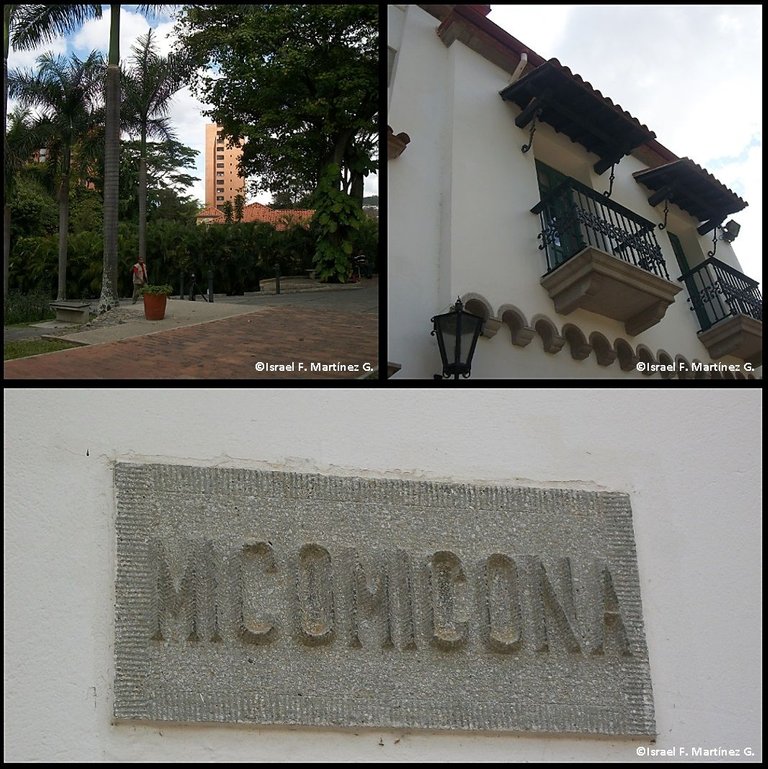
Una de las principales corrientes culturales llegadas de África tiene que ver con las creencias religiosas, en donde podemos destacar a la religión Yoruba, la cual es el principal ejemplo del sincretismo religioso con el cual se abre el camino para la construcción de un estilo de vida que se adapta a su entorno, siempre con la finalidad de coexistir con las reglas de una sociedad que ya se encuentra constituida.
Durante mi recorrido por los pasillos y salones de la casa me encontré con una exposición dedicada a la religión Yoruba, la cual tiene su origen en Nigeria y con el pasar del siglos se fue expandiendo al otro lado del océano, llegando en primer lugar a islas como Cuba o Haití y luego se fue asentando por todo el Caribe, por lo tanto Venezuela se vio influenciada de forma directa, en los lugares dispuestos para la exhibición podemos encontrar, tambores o cajones ceremoniales, trajes rituales, objetos sagrados, calderos o gangas las cuales son el instrumento principal para la comunicación del ser terrenal con sus deidades o ancestros y también podemos observar tableros de madera que se usan con los ekueles (conchas de coco unidas por una cadena) para la elaboración de oráculos que permitan la interpretación del devenir de cada persona.
One of the main cultural currents coming from Africa has to do with religious beliefs, where we can highlight the Yoruba religion, which is the main example of religious syncretism with which the way is opened for the construction of a lifestyle. that adapts to its environment, always with the aim of coexisting with the rules of a society that is already constituted.
During my tour of the halls and halls of the house I came across an exhibition dedicated to the Yoruba religion, which has its origin in Nigeria and over the centuries has spread across the ocean, first reaching islands such as Cuba or Haiti and then it settled throughout the Caribbean, therefore Venezuela was directly influenced, in the places arranged for the exhibition we can find, ceremonial drums or boxes, ritual costumes, sacred objects, cauldrons or bargains the which are the main instrument for the communication of the earthly being with their deities or ancestors and we can also observe wooden boards that are used with the ekueles (coconut shells joined by a chain) for the elaboration of oracles that allow the interpretation of the future of each person.
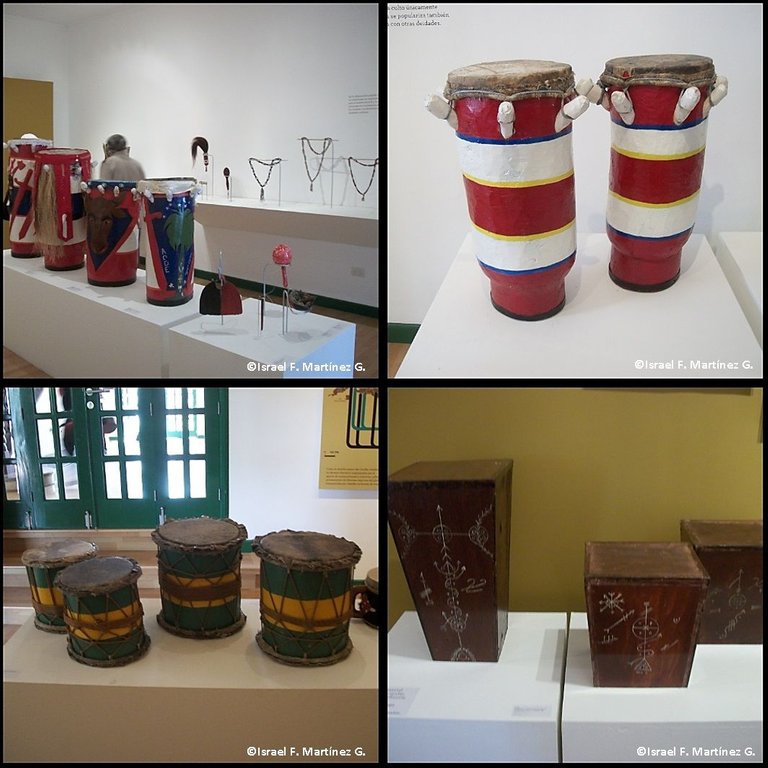
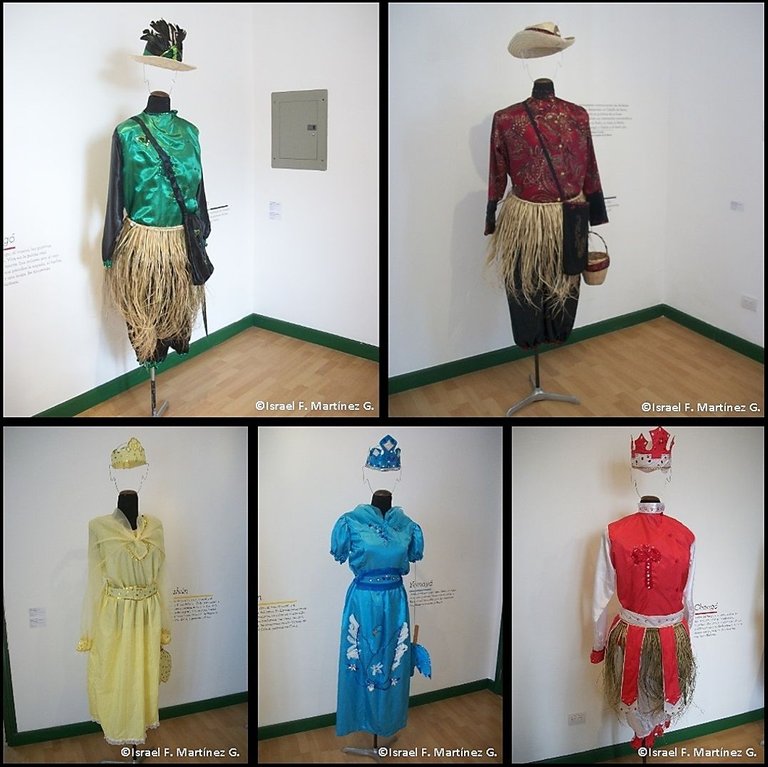
En medio del sincretismo religiosos pude aprender que muchas de las deidades de la religión yoruba tienen su similar en la Católica, esto fue el resultado de la necesidad de los esclavos de la época colonial de seguir adorando a sus dioses sin que esto significara una ofensa para los españoles, por lo tanto esta costumbre paso de generación en generación perdurando hasta nuestros días.
Una vez terminada las exposiciones nos dimos cuenta que los jardines de la casa se celebraría una representación de la parranda de San Pedro, una festividad venezolana que también tiene sus orígenes en la época colonial, cuando la esclava María Ignacia llena de preocupación por el mal estado de salud de su hija Rosa Ignacia le pide fervorosamente durante toda una noche a una imagen de San Pedro que interceda y permita su mejoría, a cambio le prometería que todos los 29 de junio ella haría lo que mejor sabia hacer que era bailar.
In the midst of religious syncretism I was able to learn that many of the deities of the Yoruba religion have their similar in the Catholic, this was the result of the need of the slaves of the colonial era to continue worshiping their gods without this meaning an offense to the Spaniards, therefore this custom passed from generation to generation lasting to this day.
Once the exhibitions were over, we realized that the gardens of the house would host a representation of the San Pedro parranda, a Venezuelan festival that also has its origins in colonial times, when the slave María Ignacia filled with concern for the poor state for the health of her daughter Rosa Ignacia fervently asks an image of Saint Peter for an entire night to intercede and allow her to improve, in return she would promise her that every June 29 she would do what she knew how to do best, which was to dance.
Esa angustiosa noche San Perdro le concedería el Milagro y Rosa Ignacia se recuperaría de manera asombrosa, de forma muy apresurada María Ignacia le contaría a su esposo Domitila lo sucedido, mientras que los días siguientes la historia recorrió las calles y en general todo el valle de Pacarigua, situación que llevo a los demás esclavos de diferentes fincas, haciendas plantaciones a sumarse de forma solidaria a la promesa de María Ignacia y desde ese mismo momento se tuvo claro que ella no bailaría ni cantaría sola, todos los esclavos la acompañarían.
That anguished night San Perdro would grant her the Miracle and Rosa Ignacia would recover in an amazing way, in a very hasty way María Ignacia would tell her husband Domitila what had happened, while the following days the story went through the streets and in general throughout the valley of Pacarigua, a situation that led the other slaves from different farms, estates, plantations to join in solidarity with María Ignacia's promise and from that very moment it was clear that she would not dance or sing alone, all the slaves would accompany her.
Pasado el tiempo con la Muerte de María Ignacia, su esposo Domitilo seguiría su promesa y cada 29 de junio se vestiría con los atuendos de la esclava y saldría a bailar y a cantar en honor a San Pedro como muestra de su agradecimiento por el favor concedido y así con el pasar de los siglos la tradición siguió adelante hasta mantenerse en nuestra época y en el año 2013 fue reconocida por La UNESCO como patrimonio cultural inmaterial de la humanidad.
Time passed with the death of María Ignacia, her husband Domitilo would follow his promise and every June 29 he would dress in the slave's attire and go out to dance and sing in honor of Saint Peter as a sign of his gratitude for the favor granted and Thus, with the passing of the centuries, the tradition continued until it remained in our time and in 2013 it was recognized by UNESCO as intangible cultural heritage of humanity.

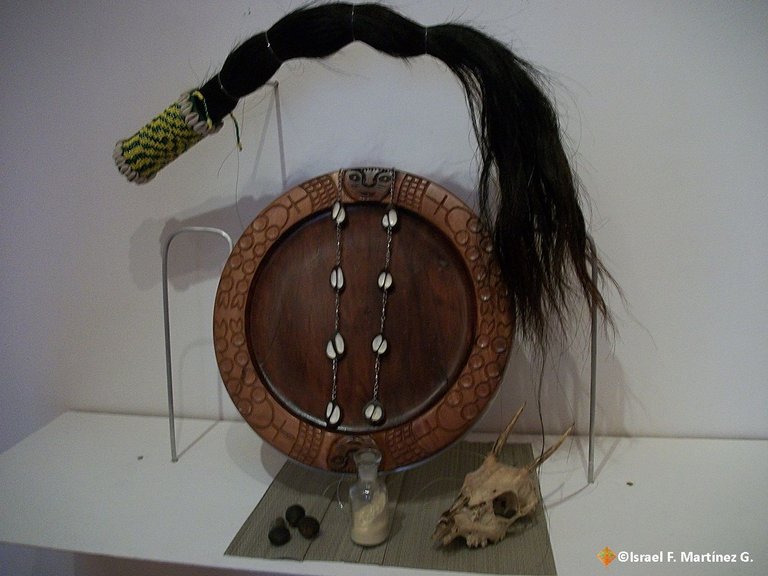
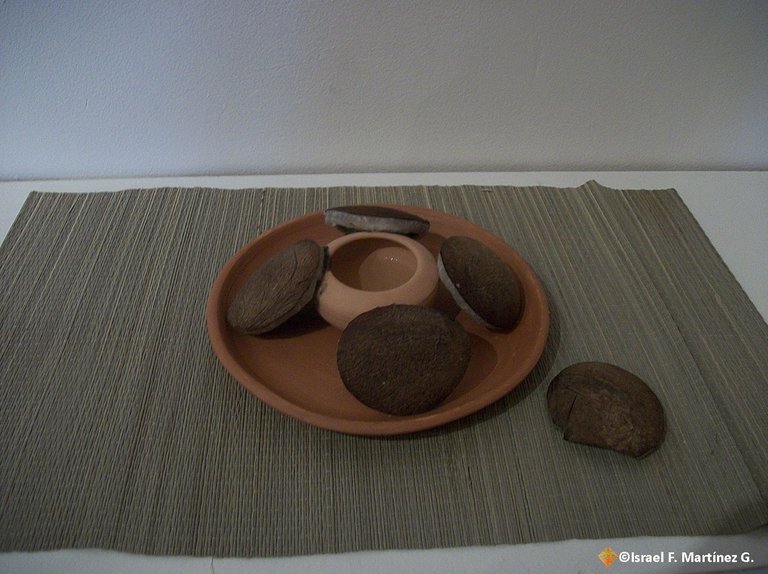
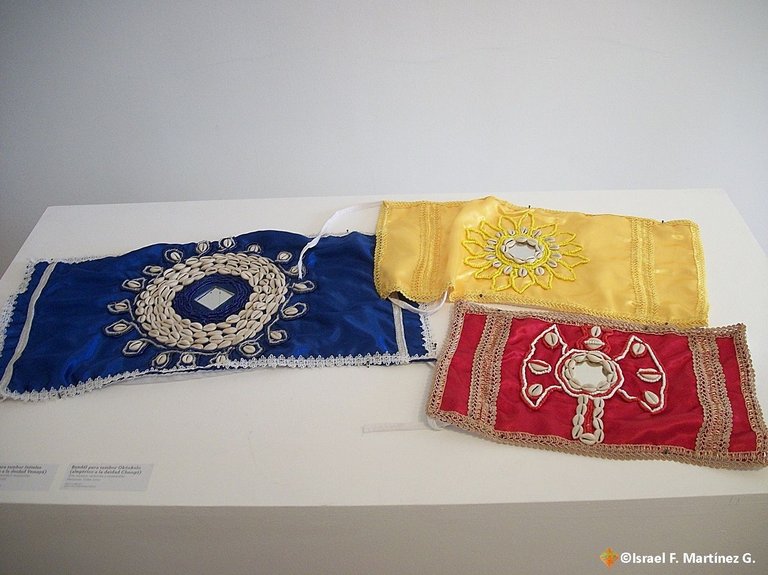
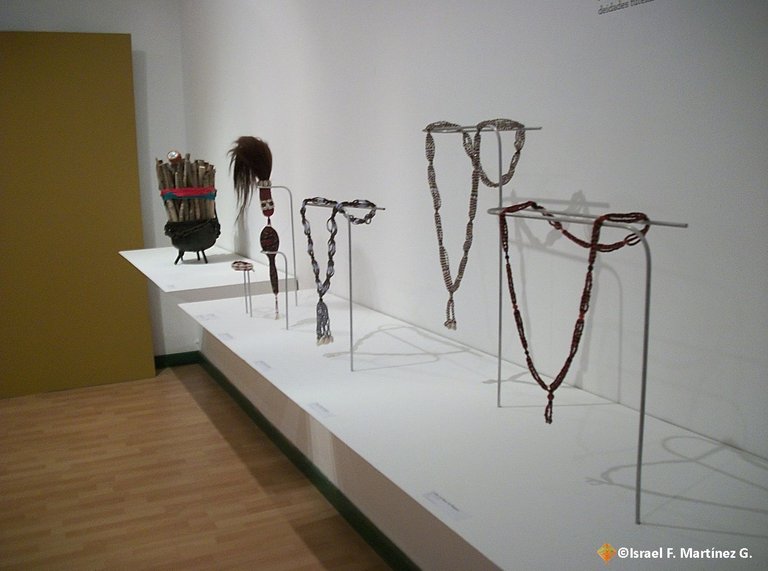
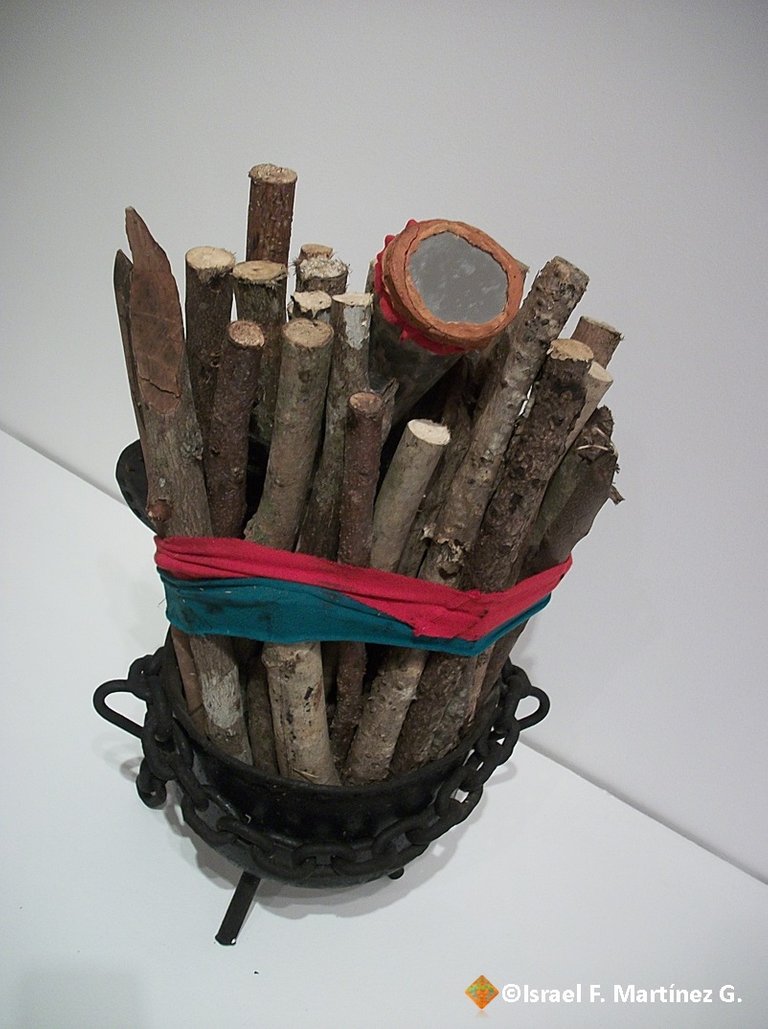
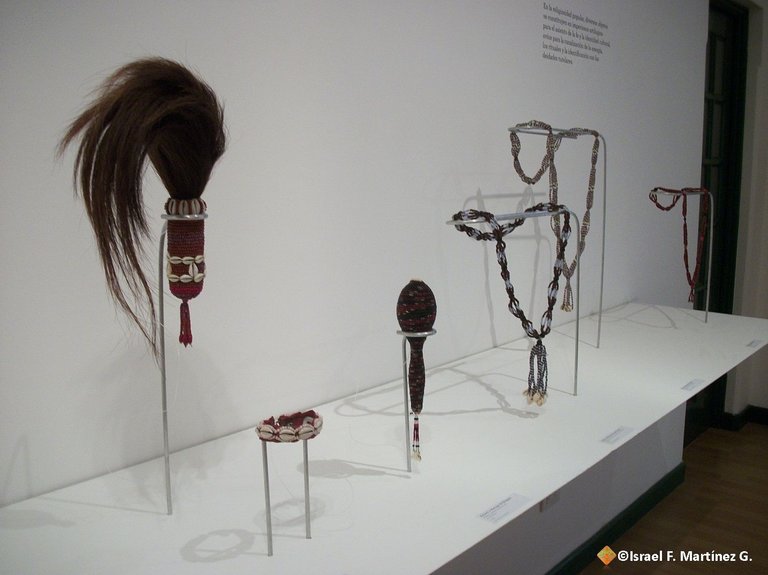
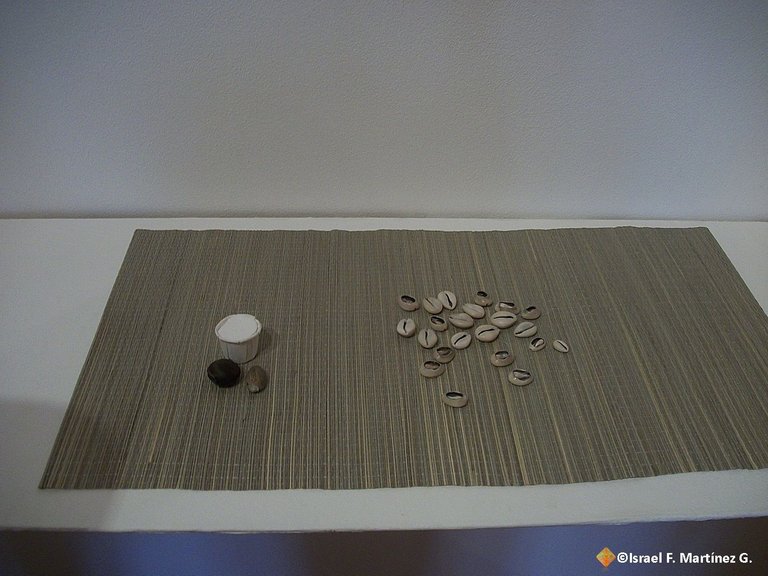
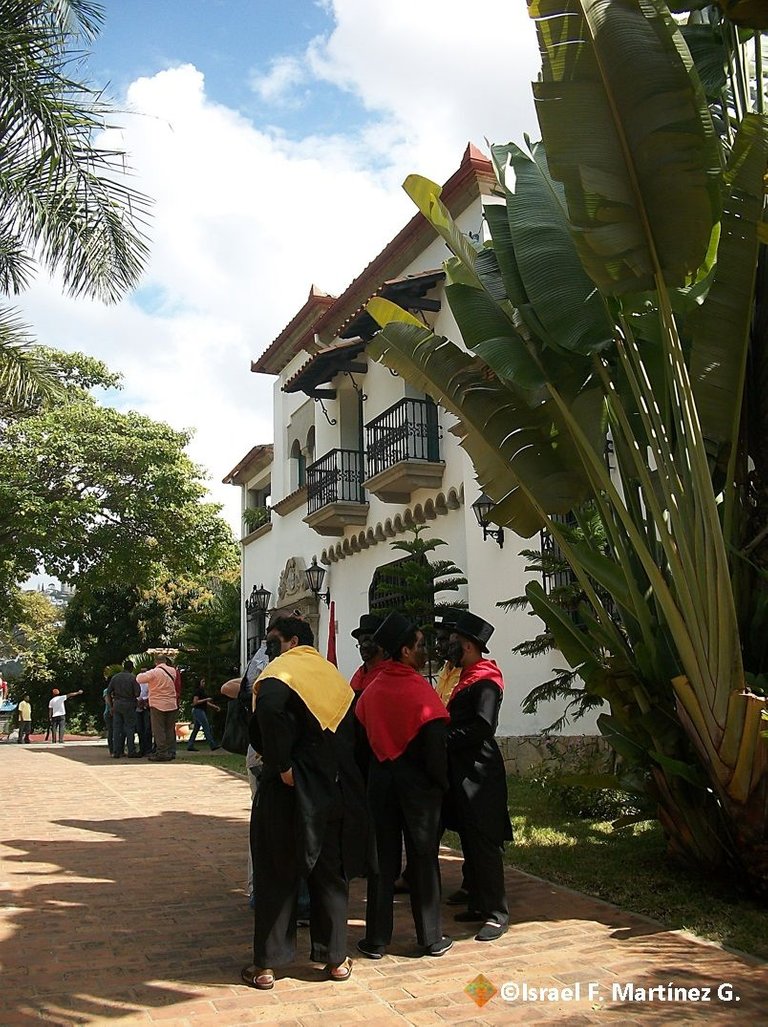
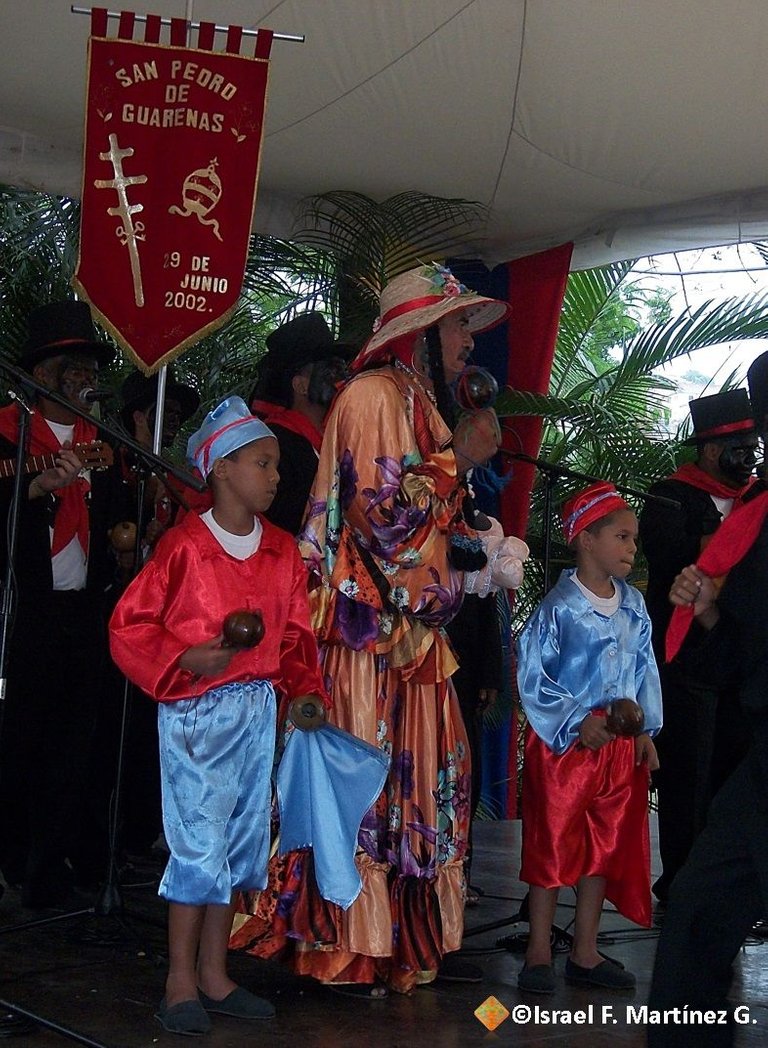
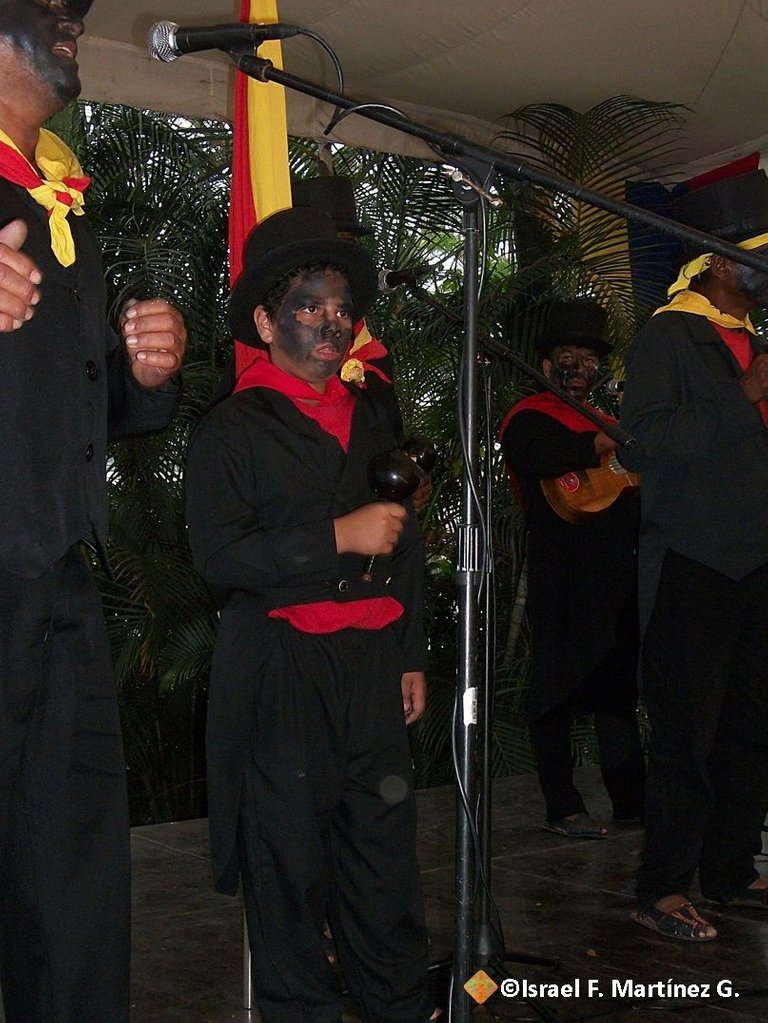

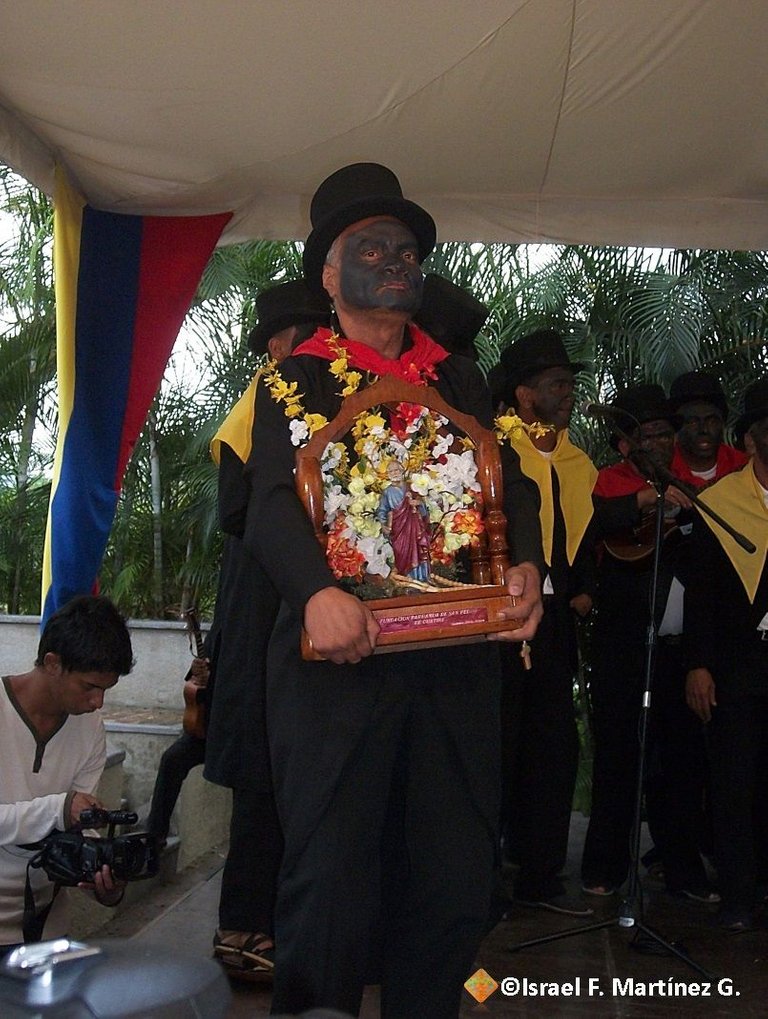
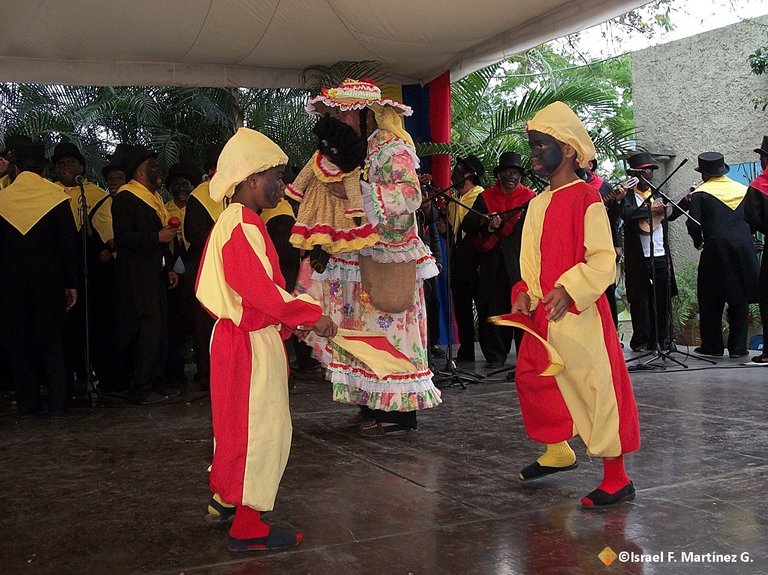
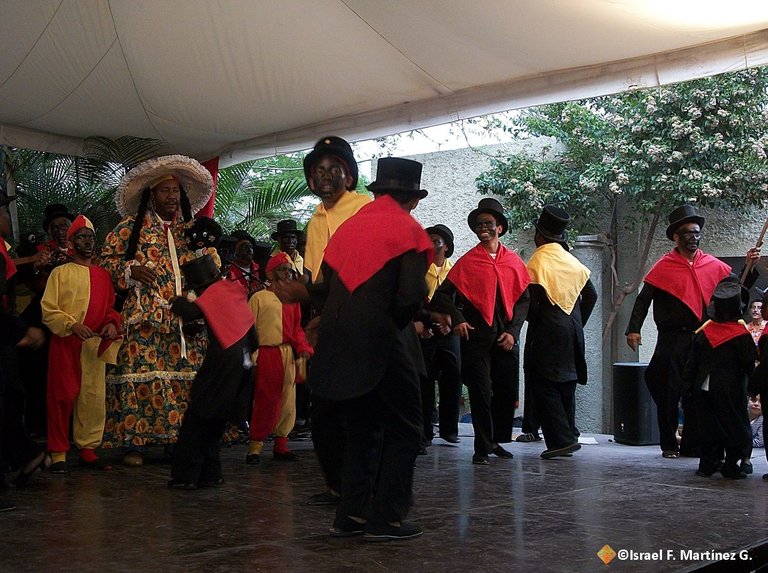
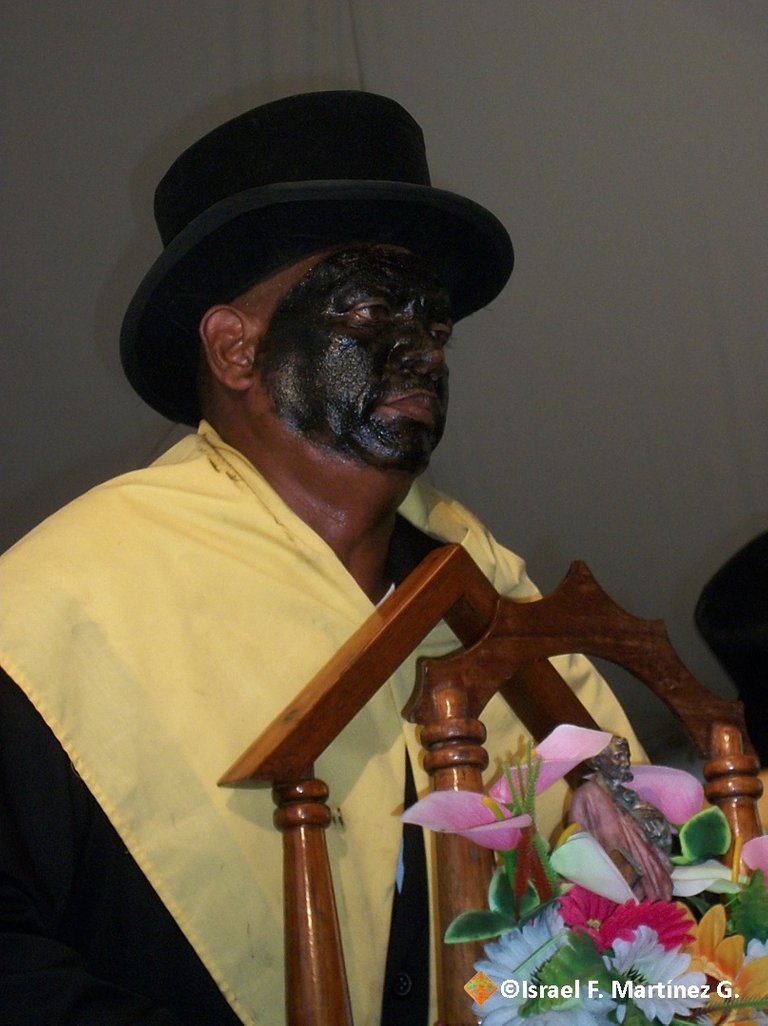
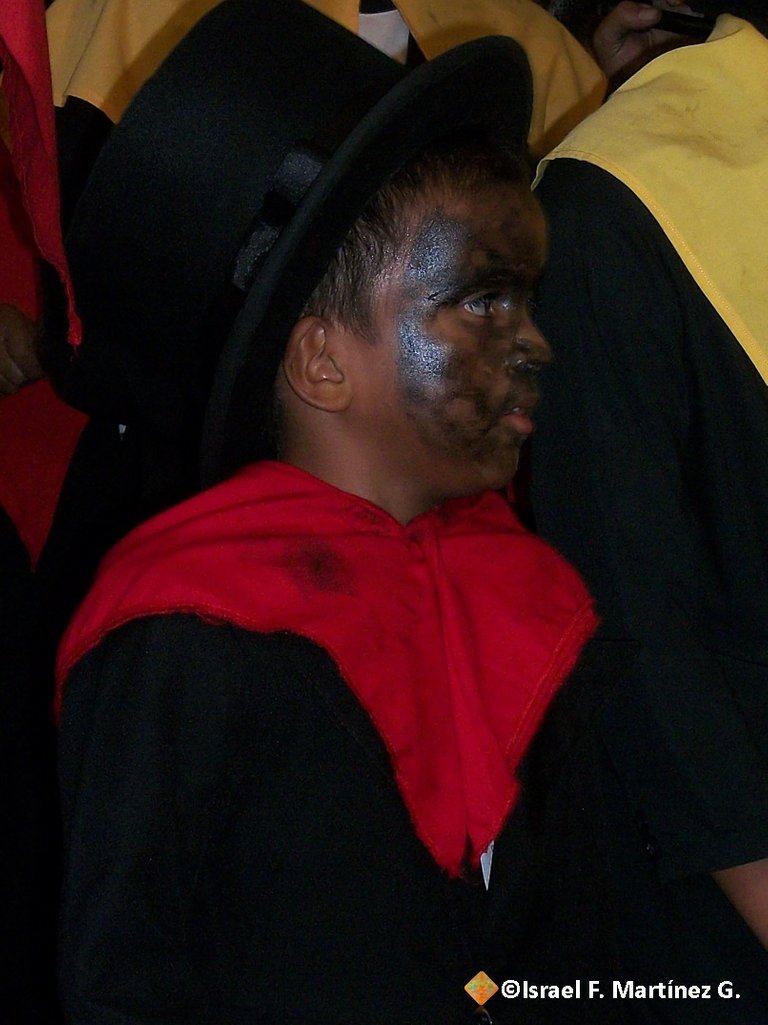
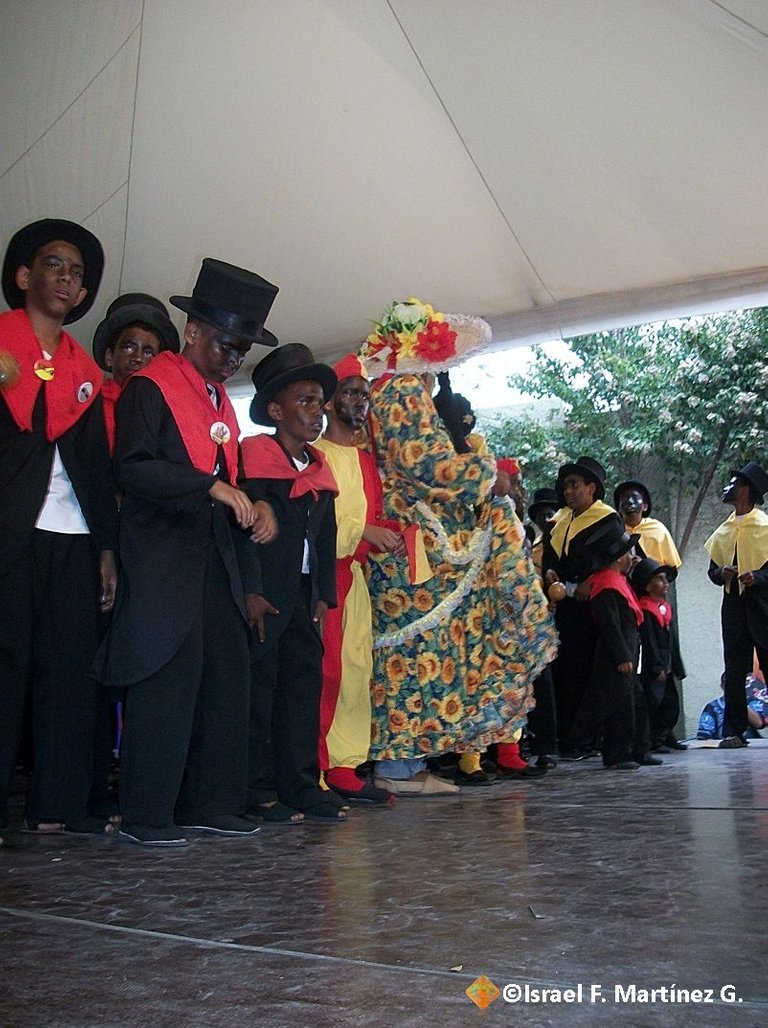

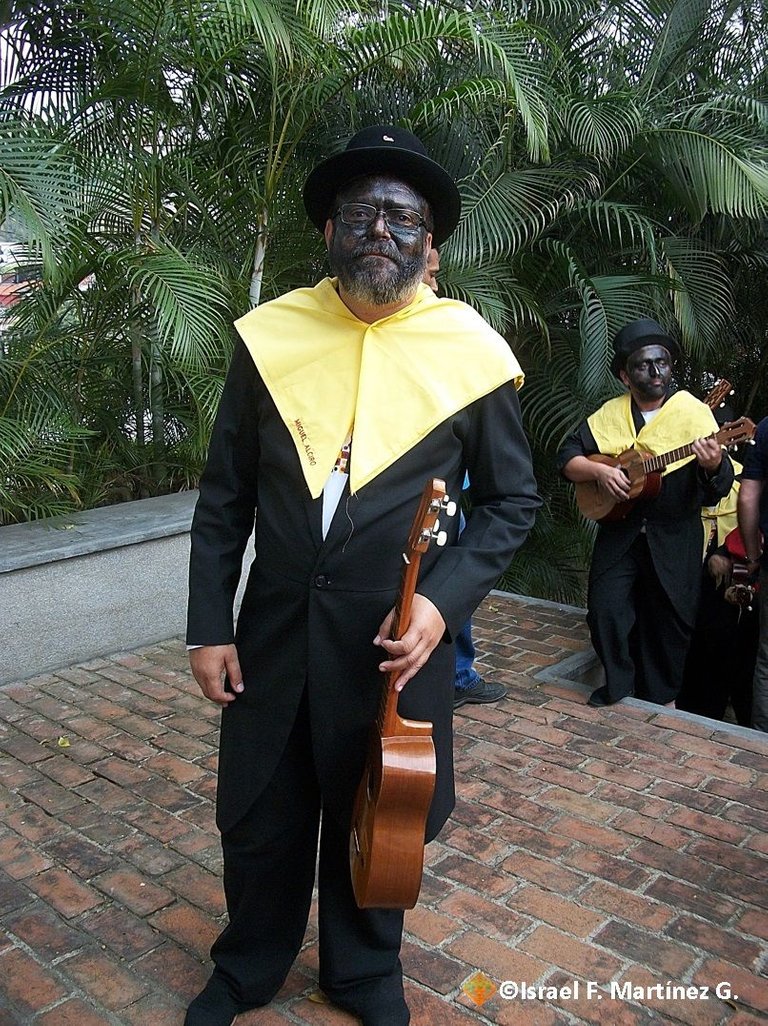
Has sido votado por
PROYECTO ENLACE
'Conectando Ideas y Comunidades'
PROYECTO ENLACE es un proyecto de curación de habla hispana enfocado en recompensar contenido de calidad y apoyar autores en su proceso de crecimiento en HIVE.
Creemos y apostamos por el futuro de esta gran plataforma, y estamos muy emocionados de poder hacerla crecer junto a esta comunidad. Así que te invitamos a usar nuestra etiqueta ENLACE y estar atento a todas las actividades que tenemos preparadas y que estaremos publicando en breve.
¿QUIERES AUTOMATIZAR TUS GANANCIAS DE CURACIÓN? SE PARTE DEL PROYECTO ENLACE APOYANDO A NUESTRO TRAIL EN HIVE.VOTE INGRESA AQUÍ PARA CONOCER LOS DETALLES.
¿QUIERES INVERTIR ENLACE? DESCUBRE COMO HACERLO Y GENERAR INGRESOS DE FORMA SEMANAL MEDIANTE TU DELEGACIÓN DE HP AQUÍ TE EXPLICAMOS COMO.
Te invitamos a participar en nuestro servidor de Discord: https://discord.gg/3S9y7BbWfS
Atentamente
EQUIPO ENLACE 2022
@enlace Amigos muchas gracias por su apoyo, les doy un gran abrazo.
¡Excelente y muy completo este trabajo, felicitaciones!
Hola amigo @ylich muchas gracias. ¡Saludos!
¡Felicidades! Esta publicación obtuvo upvote y fue compartido por @la-colmena, un proyecto de Curación Manual para la comunidad hispana de Hive que cuenta con el respaldo de @curie.
Si te gusta el trabajo que hacemos, te invitamos a darle tu voto a este comentario y a votar como testigo por Curie.
Si quieres saber más sobre nuestro proyecto, acompáñanos en Discord: La Colmena.
@la-colmena @curie ¡Hola! Muchas gracias por el apoyo brindado, ya cuentan con mi voto, saludos y abrazos.